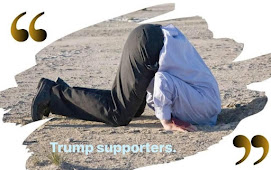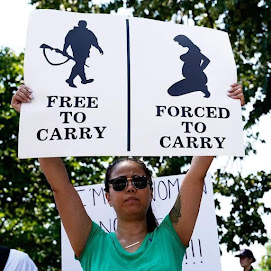 Since September 2007 renewed fighting in North Kivu has caused massive displacement in the region. A ceasefire agreement signed in January 2008 was not respected, and by the end of August large-scale fighting had broken out again in the region between various armed groups and the Congolese armed forces (FARDC), despite the presence of the world’s largest UN peacekeeping force, MONUC.
Since September 2007 renewed fighting in North Kivu has caused massive displacement in the region. A ceasefire agreement signed in January 2008 was not respected, and by the end of August large-scale fighting had broken out again in the region between various armed groups and the Congolese armed forces (FARDC), despite the presence of the world’s largest UN peacekeeping force, MONUC.Hundreds of thousands of people fled in all directions throughout the region, desperately in search of safety. The displaced, many of whom have been forced to flee multiple times, have little or no access to health care, food, water or basic shelter. They find shelter in camps or with host families, or hide in the forest where they are under threat of attack from all armed groups. Few aid agencies have established humanitarian programs with a continued presence outside the provincial capital, Goma.
Despite its UN mandate, MONUC has not been able to protect civilians from violence and forced displacement. In November, after rebel forces took control of Rutshuru, where MSF runs a surgical hospital, MONUC lead an armed “humanitarian relief” convoy into this town, a move that threatens to further blur the lines between military and humanitarian action in the region.
Iraqi Civilians in Urgent Need of Assistance
 One of the greatest challenges facing independent humanitarian action today is that of reaching civilians caught in war and armed conflicts. Nowhere is this more frustratingly illustrated than in Iraq, where MSF has struggled to gain a meaningful foothold since the US-led invasion of 2003. Various military and political actors have sought to use and abuse humanitarian action for political purposes and in doing so have made humanitarian organizations a target for violent attacks. This has undermined the ability of MSF, and other neutral humanitarian organizations to address critical needs of the civilian population.
One of the greatest challenges facing independent humanitarian action today is that of reaching civilians caught in war and armed conflicts. Nowhere is this more frustratingly illustrated than in Iraq, where MSF has struggled to gain a meaningful foothold since the US-led invasion of 2003. Various military and political actors have sought to use and abuse humanitarian action for political purposes and in doing so have made humanitarian organizations a target for violent attacks. This has undermined the ability of MSF, and other neutral humanitarian organizations to address critical needs of the civilian population.MSF was forced to leave the violence-affected regions of Iraq in 2004 when attacks on humanitarian aid workers placed its teams at too great a risk. The recent moderation of violence levels in Iraq has presented MSF with new opportunities to re-engage inside Iraq with direct medical care. In 2008, MSF has cautiously started several new projects inside Iraq.
Four million people have been displaced by the war in Iraq, with 2 million of them trapped within the country itself, according to UN High Commissioner for Refugees and the Internal Displacement Monitoring Center of the Norwegian Refugee Council. There has been some improvement of security in Iraq in the past 18 months. Overall levels of violence have reduced and a changing political environment has emerged. Despite these changes, the situation in Iraq is uncertain and many people are still living under the threat of violence.
More on Iraq here.
Millions of Malnourished Children Left Untreated Despite Advances in Lifesaving Nutritional Therapies
Food riots around the world early in 2008 brought into sharp relief the impact of rising food prices on communities as far as apart as Haiti, Bangladesh, and Ivory Coast. Less visible, though more deadly and pervasive, was the ongoing crisis in childhood malnutrition. While combating hunger depends on having access to food in sufficient quantity, conquering malnutrition also means assuring foods of adequate nutritional quality. For young, malnourished children, foods rich in nutrients, vitamins, and minerals are essential to survival and development.
The figures are shocking. The World Health Organization (WHO) estimates there are 178 million children suffering from undernutrition across the globe. All told, malnutrition contributes to 3.5 to 5 million deaths in children under five each year. According to UNICEF, the situation is actually getting worse in 16 high-burden countries. In the world’s “malnutrition hotspots,” the Horn of Africa, the Sahel and South Asia, many families simply cannot afford to provide nutritious food—particularly animal source foods such as milk, meat, and eggs—that young children need to grow and thrive. Instead, they struggle to survive—far from the media spotlight of high-profile humanitarian emergencies—on a diet of little more than cereal porridges of maize or rice, amounting to the equivalent of bread and water.
More on malnutrition here.
HIV/TB Co-Infection Poses Health Battle on Two Fronts

(click on this map)
Every year, tuberculosis (TB) kills about 1.7 million people and 9 million develop active disease. TB is on the rise in countries with high HIV rates, particularly in southern Africa, which has the highest rates of HIV. Tuberculosis is one of the leading causes of death for people living with HIV/AIDS, and in the past 15 years, new TB cases have tripled in countries with high HIV prevalence. People living with HIV/AIDS are up to 50 times more likely to develop active TB in a given year compared with HIV-negative individuals, and roughly a third of the 33 million people living with HIV/AIDS worldwide are infected with latent TB. Yet, in 2006 less than one percent of people living with HIV/AIDS were screened for TB.
While the treatment of HIV has received substantial global attention, people living with both HIV and TB have slipped mostly under the radar mainly because sensitive diagnostic tools are lacking and treatment for co-infected patients is complicated. While programs still focus on individual diseases, patients may have both and other diseases.
More on HIV/TB here.
More on all of MSF's efforts here.


























No comments:
Post a Comment